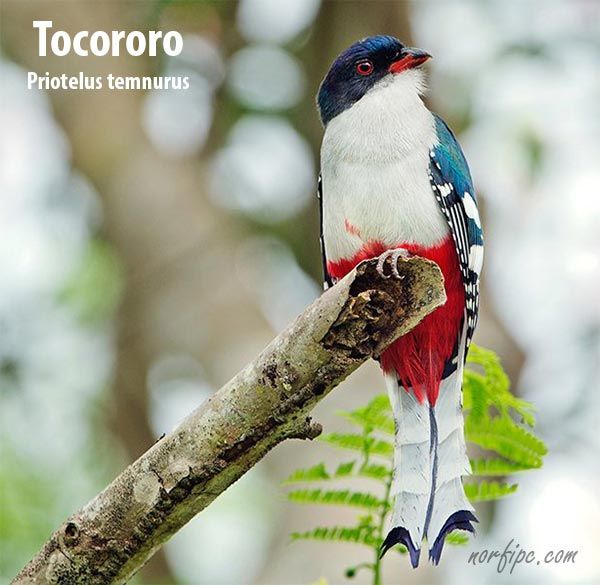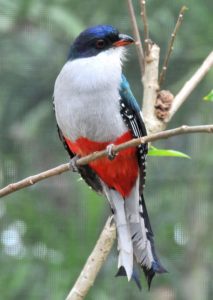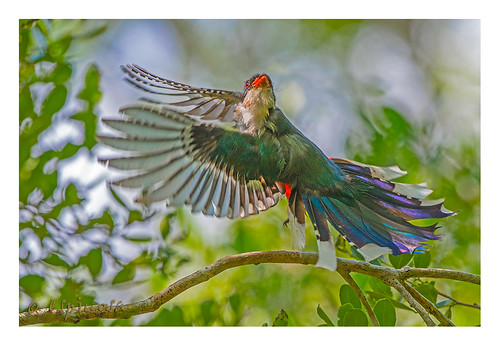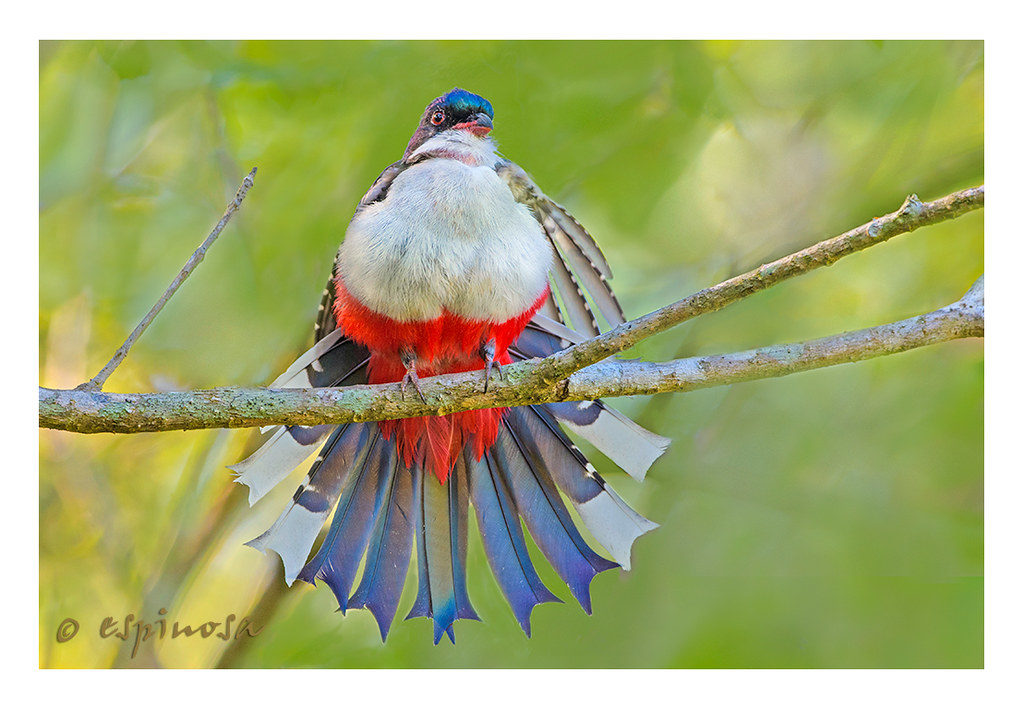 EL TOCORORO: AZUL, BLANCO Y ROJO, EL AVE NACIONAL DE CUBA.
EL TOCORORO: AZUL, BLANCO Y ROJO, EL AVE NACIONAL DE CUBA.
El azul, el blanco y el rojo , colores de la bandera de Cuba, matizan el plumaje del tocororo, proclamado como el Ave Nacional de la República caribeña.
Los aborígenes llamaban “ guatini” a esa especie endémica que alcanza 28 centímetros de longitud.
Priotelus Temnurus es la denominación científica del tocororo, cuyo nombre común proviene de su canto en el cual repite la onomatopeya “tocoró, tocoró “.
Cloqueos y murmullos de llamada son otros sonidos emitidos por esa avecilla trepadora , que suele permanecer posada la mayor parte del tiempo. Sólo rompe el reposo cuando sale en busca de frutas, insectos y flores, sus alimentos preferidos.
El tocororo vuela a cortas distancias. Sus movimientos son rápidos, precisos y algo ruidosos.
Pone sus huevos entre los meses de abril y julio. Como nido utiliza las cavidades dejadas por los pájaros carpinteros en los troncos de los árboles.
La hembra y el macho del tocororo se alternan en las tareas de incubar los huevos y alimentar a los pichones.
La Sierra de los Órganos, las montañas la Sierra Maestra , del Escambray y la Isla de la Juventud sirven de habitat a esa maravilla de la biodiversidad cubana, cuyo canto también se escucha en Ciénaga del Zapata, el mayor humedal de Cuba.
Además de su imagen multicolor , el tocororo obsequia una hermosa leyenda.
Según el mito, una bella taína prefirió la muerte a vivir como cautiva de los belicosos indios caribes, que atacaban a las tribus costeras de Cuba para secuestrar mujeres y diezmar poblaciones. El cadáver de la muchacha fue transformado en el hermoso tocororo por Atabey, diosa madre de la Naturaleza para los aborígenes de la zona del Caribe.
Al ser enjaulada, pierde su bello plumaje. En cautiverio, sobrevive poco tiempo.
Proclamado como el Ave Nacional de Cuba por su amor a la libertad y plumaje matizado por el rojo, el azul y el blanco, colores de la enseña patria, para los cubanos proteger el tocororo es defender nuestra identidad.
 EL TOCORORO: BLUE, WHITE AND RED, THE NATIONAL BIRD OF CUBA.
EL TOCORORO: BLUE, WHITE AND RED, THE NATIONAL BIRD OF CUBA.
The blue, white and red, colors of the Cuban flag, shade the plumage of the tocororo, proclaimed as the National Bird of the Caribbean Republic.
The aborigines called “endemic” that endemic species that reaches 28 centimeters in length.
Priotelus Temnurus is the scientific name for tocororo, whose common name comes from its song in which it repeats the onomatopoeia “tocoró, tocoró”.
Clucking and muttering calls are other sounds made by this climbing bird, which usually remains perched most of the time. She only breaks her rest when she goes in search of fruits, insects and flowers, her favorite foods.
The tocororo flies at short distances. His movements are fast, precise and somewhat noisy.
It lays its eggs between the months of April and July. As a nest, it uses the cavities left by woodpeckers on tree trunks.
The female and the male of the tocororo alternate in the tasks of incubating the eggs and feeding the chicks.
The Sierra de Los Órganos, the Sierra Maestra, the Escambray mountains and the Isla de la Juventud serve as a habitat for that wonder of Cuban biodiversity, whose song is also heard in Ciénaga de Zapata, the largest wetland in Cuba.
In addition to its multicolored image, the tocororo presents a beautiful legend.
According to myth, a beautiful Taino woman preferred death to live as a captive of the warlike Caribbean Indians, who attacked the coastal tribes of Cuba to kidnap women and decimate populations. The girl’s corpse was transformed into the beautiful tocororo by Atabey, the mother goddess of Nature for the aborigines of the Caribbean area.
When caged, it loses its beautiful plumage. In captivity, it survives a short time.
Proclaimed as the National Bird of Cuba for its love of freedom and plumage tinged with red, blue and white, colors of the national flag, for Cubans protecting the tocororo is defending our identity.
Agencies/ RHC/ Teresita Martinez/ Maria Calvo/ Internet Photos/ Arnoldo Varona/ wwwTheCubanHistory.com
THE CUBAN HISTORY, HOLLYWOOD.








